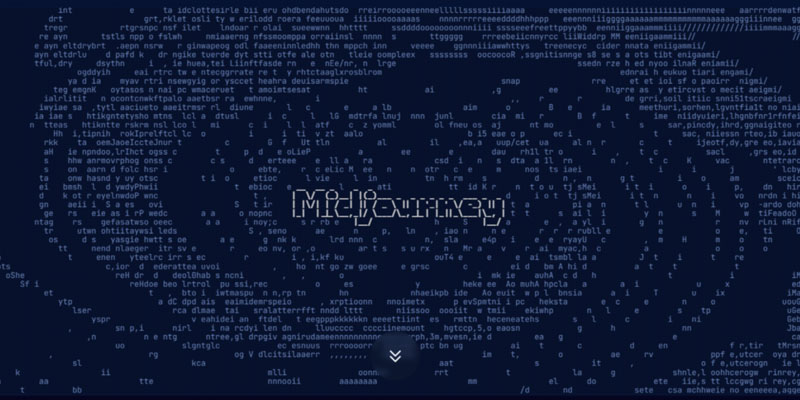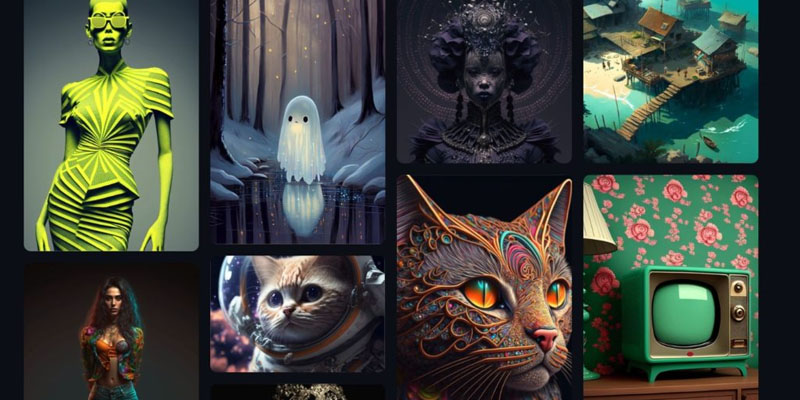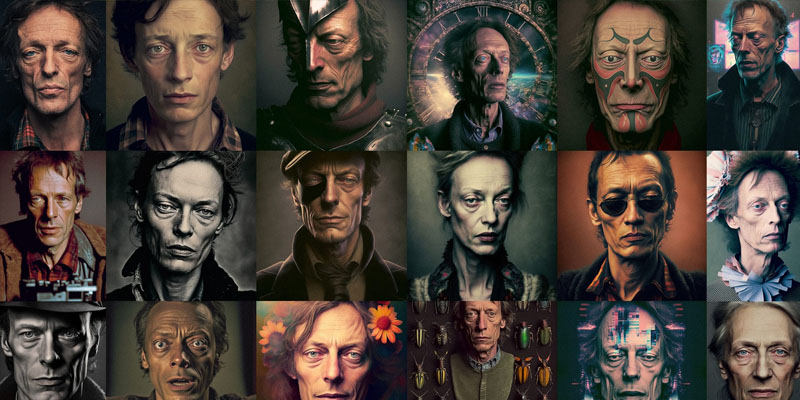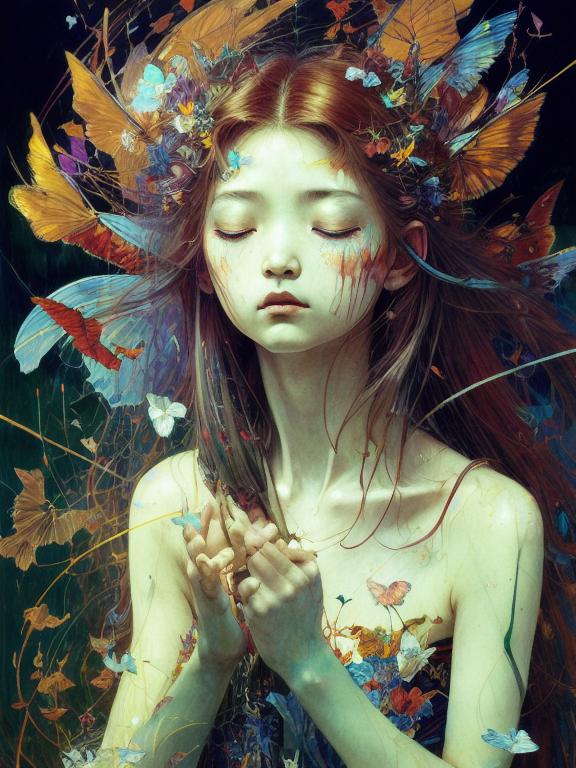Midjourney is an online tool that generates beautiful images using artificial intelligence based on text input. While it shares some similarities with Stable Diffusion, there are notable differences between the two.
Unlike Stable Diffusion, Midjourney is exclusively accessible via the internet and requires payment to use. The question then arises: is it worth investing in Midjourney?
In this article, we will explore the distinctions between the two services and determine whether Midjourney justifies its cost.
Midjourney vs Stable Diffusion – Feature Comparison

Within this section, a thorough comparison between Stable Diffusion and Midjourney is presented. Stable Diffusion offers various approaches in contrast to Midjourney. To analyze Stable Diffusion, the AUTOMATIC1111 GUI, which is widely used, will be utilized.
Image Customization

When it comes to image customization, Stable Diffusion offers a wider range of options than Midjourney.
For instance, in Stable Diffusion, users can modify the image size, adjust how closely the prompt is followed, choose the number of images generated, experiment with different seed values and samplers, and more. Meanwhile, Midjourney only allows users to adjust the aspect ratio, seed, and early stopping.
Therefore, based on the available customization options, Stable Diffusion appears to be the better choice.
Easy to Get Started

Installing AUTOMATIC1111 can be a bit challenging. Additionally, after installation, you’ll need to locate and install models to achieve the desired styles.
Midjourney’s user-friendliness is somewhat lacking, mainly because it uses Discord as its interface. Nevertheless, it’s still significantly easier to get started with than AUTOMATIC1111.
Tip: To prevent others from seeing your creations, create a private server and invite the Midjourney bot. You can then generate images in peace.
Midjourney is the clear winner!
Easy to Generate Good Images
Midjourney is renowned for its ability to produce intricate and visually appealing images with relative ease. Users may not have to exert much effort to obtain satisfying results, as the AI often creates surprising and aesthetically pleasing images even when given incomplete prompts.
In contrast, users of Stable Diffusion may need to invest more time and effort into crafting effective prompts and experimenting with different models to achieve similar levels of image quality.
Overall, Midjourney appears to be the superior choice in this regard.
Prompt
The two platforms, Stable Diffusion, and Midjourney, provide support for both prompt and negative prompts, allowing users to assign greater importance to certain keywords in their prompts. AUTOMATIC1111 offers additional prompt features such as blending two keywords. So, there is no clear winner between the two platforms.
Models Varieties
There are various models available for use, including the open-source Stable Diffusion model, which has been modified into many different styles, resulting in over a thousand downloadable models. These models can also be further customized with LoRA models, embedding models, and hypernetworks. With so many models available, it maybe difficult to try them all.
On the other hand, Midjourney’s models are limited in comparison, they only offer v1 to v5 models, along with a few special models like niji, test, testp, and HD. Although there is an additional parameter for stylizing images, the overall number of offerings pales in comparison to Stable Diffusion.
So the verdict is Stable Diffusion seems to be the better option with its wider range of models available for use.
Image Editing

Manipulating images is made easy with Stable Diffusion, which provides a plethora of editing options. This includes generating specific parts of an image with inpainting, as well as expanding an image with outpainting. You can also use the instruct-pix2pix model to give instructions on how to modify an image.
However, it’s important to note that Midjourney doesn’t support image editing.
Thus, if you need to edit an image, Stable Diffusion is the better choice.
Style
Regarding the style of images produced, Midjourney v4 defaults to a realistic illustration style, but it can also generate different styles with the right prompts.
On the other hand, Stable Diffusion offers a wider range of styles that includes realistic photos and abstract art, thanks to its active community and ease of model training. It also allows users to experiment with embedding, loRAs, and hyper networks for unexpected effects. Based on these factors, the verdict is that Stable Diffusion is the better option.
Variation from a Generation
Each proposal produces small divergences from the original image. To accomplish this, you click the V buttons located beneath the images in Midjourney or opt for the variational seed feature in AUTOMATIC1111. So it’s a draw!
Control Composition and Poses
There are various ways to control the composition and pose in Stable Diffusion, such as through image-to-image, depth-to-image, instruct-pix2pix, and controlNet methods. In Midjourney, the nearest option is to use an image prompt that functions similarly to a text prompt for image generation control. As a result, Stable Diffusion emerges as the preferred choice.
Cost
To use Midjourney, it costs you at least $10 per month. While you can use Stable Diffusion with AUTOMATIC1111 for free on your own computer. Therefore, we recommend you to choose Stable Diffusion when price is an issue for you.
License
It’s important to note that ownership of images created through Midjourney’s platform varies depending on your paid subscription level. If you are not a paid subscriber, you do not own the images and Midjourney has the right to use them without your consent. On the other hand, if you pay more, you have more ownership rights. It’s advisable to review their terms of service carefully.
In contrast, Stable Diffusion does not claim any rights to the images generated through its platform. Users are allowed to distribute and train the model, and even sell it. However, there may be additional restrictions for models fine-tuned by other users, so it’s important to carefully review the license and terms of use when working with a new model.
Overall, it appears that Stable Diffusion is the better choice in terms of ownership and flexibility.
Content Filter
While the original Stable Diffusion v1 software includes a content filter, the community has shared a version with the filter disabled, making it easy to bypass. In contrast, the v2 models have NSFW content removed from the training images, so they cannot generate explicit content.
Midjourney explicitly blocks the generation of explicit images at the prompt level, and users can face consequences, such as being banned if they attempt to do so.
It appears that Stable Diffusion has more flexibility in terms of generating the content, although it’s important to consider ethical and legal considerations when doing so.
Making your Own Models
One of the most significant advantages of using Stable Diffusion is the ability to create your own models. If the images generated by the pre-existing models don’t meet your needs, you can always train your own model using tools like dreambooth, textual inversion, LoRA, hypernetwork, or even by conducting additional rounds of training with your own images. However, this is not possible with Midjourney.
It seems that Stable Diffusion comes out ahead in terms of customization and flexibility due to the ability to create your own models.
Upscalers
Both Stable Diffusion and Midjourney offer upscalers, but AUTOMATIC1111, which is available on Stable Diffusion, offers more choices and parameters. Additionally, it’s easy to install additional upscalers on the platform.
Based on this, it seems that Stable Diffusion offers a better upscaling experience than Midjourney.
Prompt
MidJourney allows users to use an image as a prompt in combination with a text prompt to generate a combination of both prompts. In contrast, Stable Diffusion’s image-to-image feature uses the input image as an initial image but does not use it for conditioning. However, Stable Diffusion Reimagine does use an input image for conditioning instead of a text prompt, which is the closest equivalent to MidJourney’s approach.
Overall, it seems that MidJourney has an advantage in terms of using image prompts in conjunction with text prompts, while Stable Diffusion’s approach is more focused on using input images for conditioning. The best choice ultimately depends on the user’s specific needs and preferences.
Image-to-image
At present, Midjourney does not provide any image-to-image functionality, which allows diffusion models to generate images based on existing ones. This is not unexpected, as earlier versions of Midjourney may not have been diffusion models.
In contrast, Stable Diffusion does offer image-to-image functionality, providing users with more flexibility and creative possibilities.
So, for those interested in image-to-image generation, Stable Diffusion may be the better choice.
Prompt Limit
Previously, Midjourney’s user guide stated that there was a 60-word limit for prompts, but this statement has since been removed, making the prompt limit unclear. In contrast, AUTOMATIC1111 now supports prompts of unlimited length.
Therefore, the verdict is unclear as to which platform has a more flexible prompt limit.
Difference Between Midjourney and Stable Diffusion

Midjourney utilizes a proprietary business model, in which they handle model development, training, tweaking, and the user interface. The platform aims to be user-friendly, providing a simple and seamless experience. Users can input their desired output, and the model generates it for them.
Stable Diffusion is an open-source software that fosters an ecosystem of collaboration. The model’s code and training data are accessible to all, allowing users to fine-tune the model to meet their specific needs. Many users have already taken advantage of this feature, sharing thousands of publicly available models.
Furthermore, new and innovative tools are continuously being developed within the Stable Diffusion community. It’s inspirational to see the creativity and resourcefulness of users when given the opportunity to collaborate and build upon each other’s work.
Midjourney vs Stable Diffusion: Which One I Should Choose?
If you’re trying to decide between Midjourney and Stable Diffusion, it’s important to consider their respective strengths and weaknesses.
Midjourney may be the better option if you’re looking for an AI image solution that doesn’t require deep learning expertise. It’s a good choice if you’re short on time and want to avoid the setup and learning curve required with other models. Additionally, if you’re drawn to Midjourney’s styles and don’t mind paying a subscription fee, it may be a good fit for you. However, it’s important to review and accept their terms of use.
Stable Diffusion may be the better choice if you’re looking for a completely free solution and prefer open-source tools. It’s ideal if you’re comfortable with running everything locally and have the technical expertise to tinker with your setup, try out different model combinations, and use new tools. If you require image-editing capabilities and prefer more control over your images, Stable Diffusion may be the better choice for you.
Conclusion
Hopefully, this article has provided you with useful insights into the differences between Midjourney and Stable Diffusion, and has helped you make an informed decision on which one to use. If you have the time and resources, it’s worth experimenting with both platforms, as they can both offer valuable features for your workflow. Thanks for your attention!